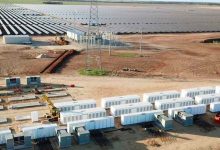More speculator falls in the costs of solar PV and battery storage technologies is ensuring that renewables are not only vastly cheaper than coal and gas power plants on generation costs, but also competitive with fossil fuel generation when it comes to dispatchable generation.
The latest technology cost analysis released by research company BloombergNEF shows that battery storage costs have fallen by more than one third since the first half of 2018, and even wind and solar have also fallen by another 10 per cent 18 per cent respectively over that time. Offshore wind is down 24 per cent over the last year.
The big mover, and the most significant for the unfolding low carbon energy transition has been the cost of lithium-ion battery storage, which BNEF says has fallen by 35 per cent to $US187/MWh. That means it is competing with, and in some cases, easily beating gas generation for tenders for peaking plants, including in the US where gas is supposed to be cheaper than elsewhere.
“Solar PV and onshore wind have won the race to be the cheapest sources of new ‘bulk generation’ in most countries,” said Tifenn Brandily, energy economics analyst at BNEF. “But the encroachment of clean technologies is now going well beyond that, threatening the balancing role that gas-fired plant operators, in particular, have been hoping to play.”
BNEF describes the cost falls of wind, solar and storage – all regarded as immature and expensive technologies just a few years ago – as “staggering”, and are largely due to technology innovation, economies of scale, stiff price competition and manufacturing experience.
“Our analysis shows that the LCOE per megawatt-hour for onshore wind, solar PV and offshore wind have fallen by 49 per cent, 84 per cent and 56 per cent respectively since 2010,” says Elena Giannakopoulou, head of energy economics at BNEF.
“That for lithium-ion battery storage has dropped by 76 per cent since 2012, based on recent project costs and historical battery pack prices.”
 These cost falls for batteries are opening up new opportunities for them to balance a renewables-heavy generation mix, BNEF says.
These cost falls for batteries are opening up new opportunities for them to balance a renewables-heavy generation mix, BNEF says.
Batteries co-located with solar or wind projects are starting to compete, in many markets and without subsidy, with coal and gas-fired generation for the provision of ‘dispatchable power’ that can be delivered whenever the grid needs it.
“Electricity demand is subject to pronounced peaks and lows inter-day. Meeting the peaks has previously been the preserve of technologies such as open-cycle gas turbines and gas reciprocating engines, but these are now facing competition from batteries with anything from one to four hours of energy storage,” according to the report.
This accords with the findings in Australia by the CSIRO and the Australian Energy Market Operator in a major report last year that pointed to wind and solar and storage as the cheapest option for dispatchable generation in the country.
Yet another report from the US this week suggested that wind and solar, along with storage, were now so cheap it would be cheaper to close 75 per cent of the coal generation in the US and replace them with renewables and storage.
The cost fall trajectories are now being bested by the newest, offshore wind, which has often been seen as a relatively expensive generation option compared to onshore wind or solar PV.
However, BNEF says auction programs for new capacity, combined with much larger turbines, have produced sharp reductions in capital costs, to below $US100 per MWh, compared to more than $US220 just five years ago.
Giannakopoulou said: “The low prices promised by offshore wind tenders throughout Europe are now materializing, with several high-profile projects reaching financial close in recent months, Giannakopoulou said.
“Its cost decline in the last six months is the sharpest we have seen for any technology.”
The great majority of the decline in solar PV over the last year occurred in the third quarter of 2018, when a shift in Chinese policy caused there to be a huge global supply glut of modules, rather than over the most recent months.










